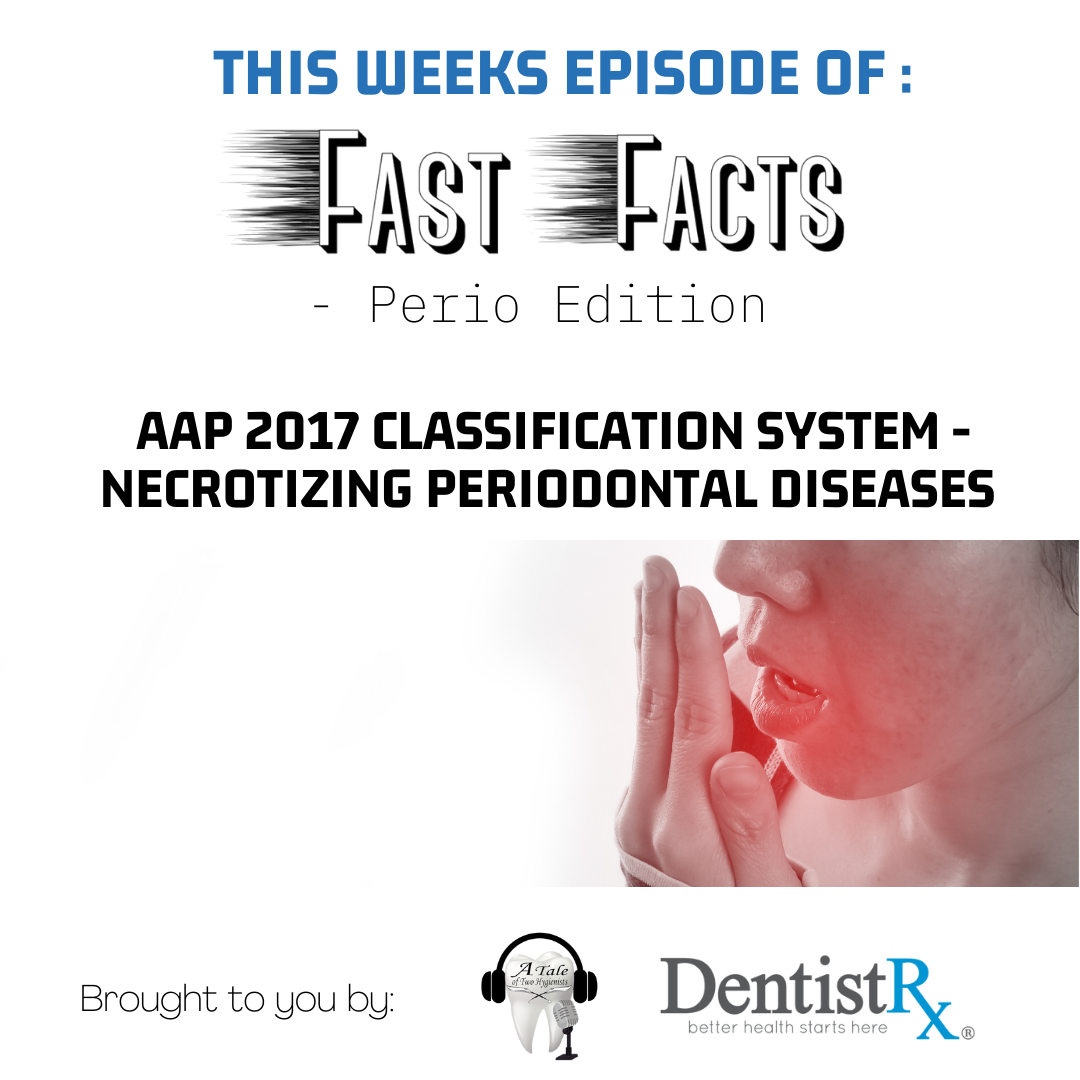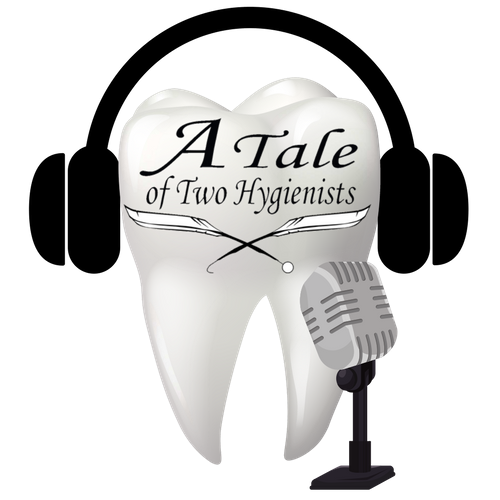
Fast Facts: Perio Edition Episode 45
[Andrew Johnston, RDH]
Welcome back everyone! You are listening to another episode of Fast Facts- Perio Edition brought to you by A Tale of Two Hygienists in partnership with DentistRX. And now, please welcome your host, Katrina Sanders.
[Katrina Sanders, RDH]
Hello and welcome to Fast Facts: Perio Edition. On this week's episode, we continue the conversation around the 2017 AAP classification system. And this week we're going to talk about necrotizing periodontal diseases. OK, you guys, if any of you have ever treated a patient that has a necrotizing periodontal disease, you'll never forget it. In fact, the smell of that disease process alone is probably ingrained into your nose hairs, if you know what I'm talking about.
Patients that present with necrotizing periodontal diseases can present with either necrotizing ulcerative gingivitis or necrotizing ulcerative periodontitis. Now, necrotizing ulcerative gingivitis, of course, is loosely defined as the reversible condition versus NUP or necrotizing ulcerative periodontitis, in which we've begun to see an irreversible observation of the gingiva and supporting structures. Ideologically, though, when we look at these two diseases, albeit they're in different stages, but they're the same type of disease, we begin to see that there's a relatively similar clinical characteristic, relatively similar treatment associated with how we address this disease process.
Now, to be clear, when assessing a patient for the presence of necrotizing disease, one of the primary signs that we oftentimes see with necrotizing disease is a punched out papilla. And this is something that can be observed in necrotizing ulcerative gingivitis cases, but certainly very apparent in our necrotizing ulcerative periodontitis patients. These patients will also likely present with a pseudo membrane or a grayish transient observation associated with sloughing, aggressive sloughing of the oral mucosa. This can also be observed with patients that have an odor, the patients are absolutely experiencing severe inflammation, and I hate to say it, one of my favorite parts about necrotizing disease is that it's often times accompanied by pain, which I think oftentimes is a massive driver. It brings patients into the office. Oftentimes these patients are not only experiencing localized pain, but also a swelling or a systemic acquisition of the lymphatics. These are patients that absolutely are experiencing some systemic observations, not just an oral lesion alone.
We do see that patients that present with recurrent or episodic observations of necrotizing ulcerative gingivitis can easily move into necrotizing ulcerative periodontitis. So that recurrence of that disease process can continually present periodically within the same site.
Unfortunately, we often times see this type of observation, particularly in HIV and AIDS patients, although not necessarily always. The microbiota associated with necrotizing periodontal disease in HIV patients can demonstrate an invasion of Candida as well as herpes viruses and other types of infections. So we can see that this can be an opportunistic infection observed in a delayed host immune response. We can also see necrotizing diseases associated, for example, with malnutrition. We can see this in patients that are experiencing psychological stress, insufficient sleep, inadequate oral hygiene, overt tobacco and alcohol consumption, patients of a young age or specific ethnic groups and even seasonally, for example, in areas of Central Africa during rainy season, we can see other types of factors, other types of variants associated with these diseases. The important piece to understand is that these lesions begin as a gingival condition in the connective tissue and if not eradicated, this superficial bacteria can absolutely invade the connective tissue and create the irreversible condition of necrotizing ulcerative periodontitis.
Thank you for tuning in this week as we unpacked necrotizing periodontal diseases, stay tuned as next week we continue the conversation around the AAP 2017 classification system, now focusing on diagnosing patients with periodontitis. Have a wonderful week.
This has been another episode of Fast Facts - Perio Edition with Katrina Sanders, RDH. Please feel free to reach me on Instagram @thedentalwinegenist or on my website www.KatrinaSanders.com Cheers.
[Andrew Johnston, RDH]
Thank you for listening to another episode of Fast Facts - Perio Edition, brought to you in part by DentistRX makers of the InteliSonic line of power brushes. Find out more by visiting their website at www.dentistrx.com. We'll see you next week for another Fast Fact!
